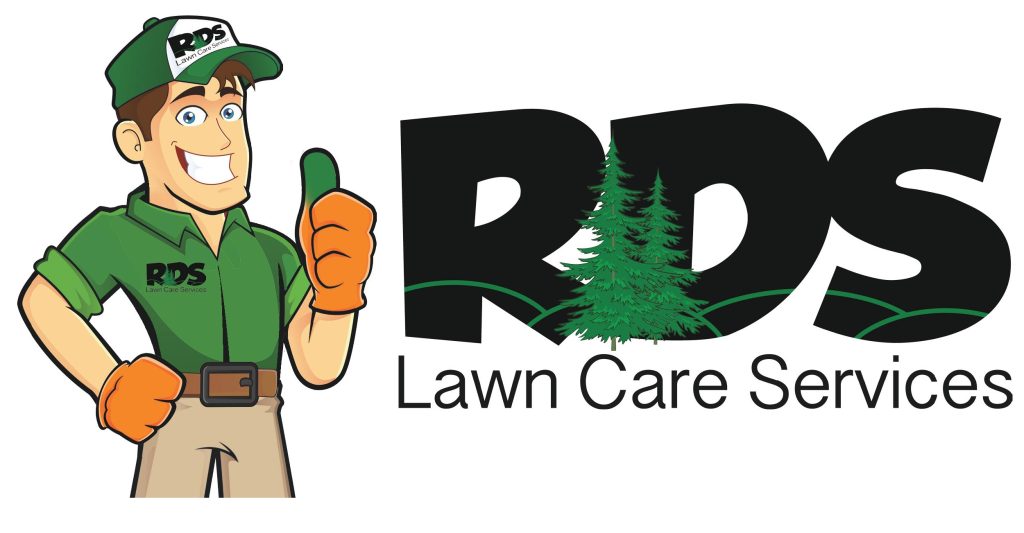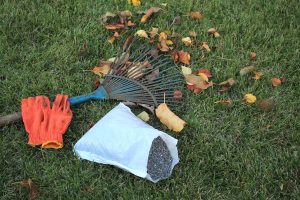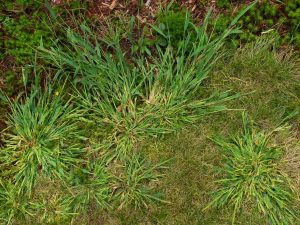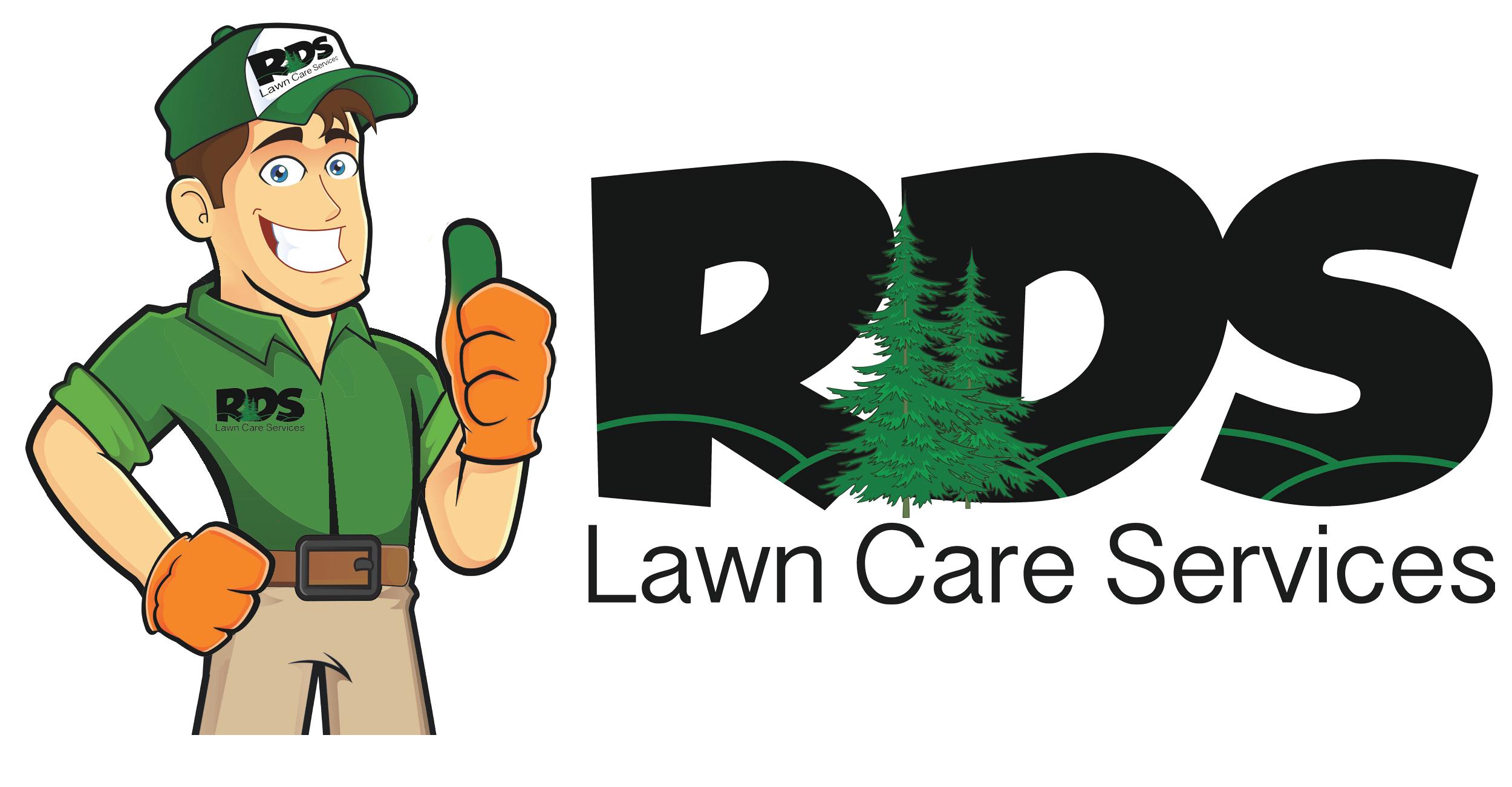Weeds are a common problem for homeowners in the Carolinas. In fact, they can be so pervasive that they cause damage to your lawn and cost you time and money. That’s why it’s important to identify weeds early in the year to take steps to prevent them. This guide will provide information on what makes a weed a weed, and why you do not want them growing in your North Carolina lawn!
What Are Lawn Weeds?

You may know generally what a “weed” is, but when we talk about lawn weeds, we are referring to intruding plants that grow without being deliberately planted or cared for by humans (unlike the turfgrass in your lawn or flowers in your gardens). They can also be defined as any plant that is considered a nuisance or undesired in your lawn. Lawn weeds are so detrimental to the health and longevity of your lawn because they compete for resources such as nutrients, minerals, water, and other beneficial resources that your lawn needs in order to thrive. Unfortunately, the invasive roots and aggressive seed production of weeds often allow them to crowd out your grass, and soon your lawn will not be able to properly absorb the nutrients in the soil or from fertilizers.
What Do Lawn Weeds Look Like?

Weeds come in all shapes and sizes, but they generally have some similar characteristics that can help you identify them, which is always the first step in removing weeds from your lawn! Some weeds are harder to identify than others, especially ones that look like healthy turfgrass or flowers. For example, annual ryegrass can be used as turf in a lawn, but it will harm lawns that are seeded with a different grass type if it grows where it is unexpected, making it a weed. Likewise, morning glories are gorgeous flowers that you may want in your yard, but field bindweed produces identical flowers that will destroy your garden before you even realize they are there. Keep an eye out for the following when trying to identify weeds in your lawn:
- Patches of taller, faster, or greener growth in your lawn
- Differently shaped grass blades/leaves
- Taller stems than surrounding plants
- Matted or tangled stems
- Prostrate growth with runners and rhizomes
- Seed heads developing quickly/unexpectedly
- Flowers growing singularly or in clusters at odd times
- Deep central taproots and/or shallow fibrous roots
Types Of Lawn Weeds
Identifying lawn weeds comes down to understanding the two main categories, which are grassy weeds and broadleaf weeds. Though there are an estimated 8,000 species of weeds around the world, the weeds in your lawn will belong to one of these categories. Weeds of one type will have distinct characteristics that differentiate them from weeds in the other category. Let’s take a closer look at what makes weeds in these categories different from one another so you can confidently identify any troublesome plants in your lawn and yard!
Grassy Weeds

These types of weeds are the most difficult to identify in a lawn because they masquerade as healthy turfgrass. They often share many characteristics with turfgrass, but they do not produce the same quality lawn that healthy turfgrasses produce. In fact, the invasive roots of grassy weeds often overtake healthy root systems in the soil, which will cause your lawn to be filled with harmful and undesirable weeds. Many grassy weeds have roots that will stay close to the soil surface to get easy access to nutrients. If you see patches of sudden and quick grass growth that is taller than the surrounding grass, you likely have a grassy weed problem.
Common Grassy Weeds In North Carolina:
- Annual Bluegrass
- Creeping Bentgrass
- Crabgrass
- Goosegrass
- Nutsedge
Broadleaf Weeds

Broadleaf weeds are identifiable by their famously thick and wide leaves (hence the name) that vary in color from the surrounding plants in your yard. Depending on the species of broadleaf weed, the plant may produce a single flower or cluster of flowers. Broadleaf weeds can grow annually, biennially, or perennially, making their growth and control needs difficult to predict. These weeds are known to multiply quickly, utilizing a mixture of rhizomes, stolons, and seeds to sprout new weed growth. Broadleaf weeds can have a very shallow root system near the surface of the soil, a deep taproot, or a combination of both.
Common Broadleaf Weeds In North Carolina:
- Dandelion
- Purslane
- Field Bindweed
- Creeping Charlie
- Virginia Buttonweed
Where Do Weeds Come From?

Lawn weeds are caused by many different factors, and they can also multiply and spread in several different ways. Weeds are spread from multiple sources, such as wind, water, and even just foot traffic. Seeds from weeds carried by the wind can drop into your lawn and start to grow without you even noticing them. Birds and other animals in your yard can also spread weed seeds by inadvertently carrying them on their bodies or through their droppings. Once established, weeds will also spread their roots, tubers, and rhizomes to expand their invasion and sprout new plants. Lawns that experience any of the following factors are at a higher risk of an invasion:
- Poor Drainage: Poor soil drainage and low fertility create an ideal environment for weeds to grow, as many types thrive in overly moist soil.
- Overwatering: Too much water can create a soggy environment which, once again, encourages weed seed germination.
- Inadequate Mowing: Mowing too low or infrequently can weaken grasses, allowing weeds to take hold.
- Improper Fertilization: Fertilizer helps to promote healthy grass growth, but too much or not enough nitrogen is an open invitation for weeds to invade.
- Excess Sunlight: Some sunlight is necessary for all plants, but too much sun exposure can weaken turfgrass and leave it vulnerable to weeds.
- Soil Compaction: Compacted soils have less oxygen and nutrients available for roots, which favors the shallow roots of many weeds.
Preventing Lawn Weeds In North Carolina

If you know the types of weeds you are dealing with, removing them from your lawn is much easier. Weeds with a single taproot may be able to be pulled up or dug out, while other weeds have much more fibrous roots that you never want to attempt to pull by hand, or else you will risk leaving root fragments behind that will sprout more weeds!
Without question, the best way to prevent weeds from invading your lawn is simply to maintain a healthy lawn throughout the year. As we mentioned earlier, struggling lawns and soils are prime locations for weeds, so keeping your lawn in order will help deter weeds from spreading or even growing in the first place. The following tips should help you keep a lush, green lawn all year long!
- Mow weekly, and set blade between 3-4 inches to choke out weed seeds.
- Water your lawn deeply and infrequently to reach deeper turfgrass roots.
- Use a season-appropriate fertilizer, and monitor nitrogen levels.
- Test soil regularly, and balance pH level when necessary.
- Apply a pre-emergent in spring to prevent weeds from growing.
- Last, but never least, call RDS Lawn Care for all your weed control needs in the Carolinas!




